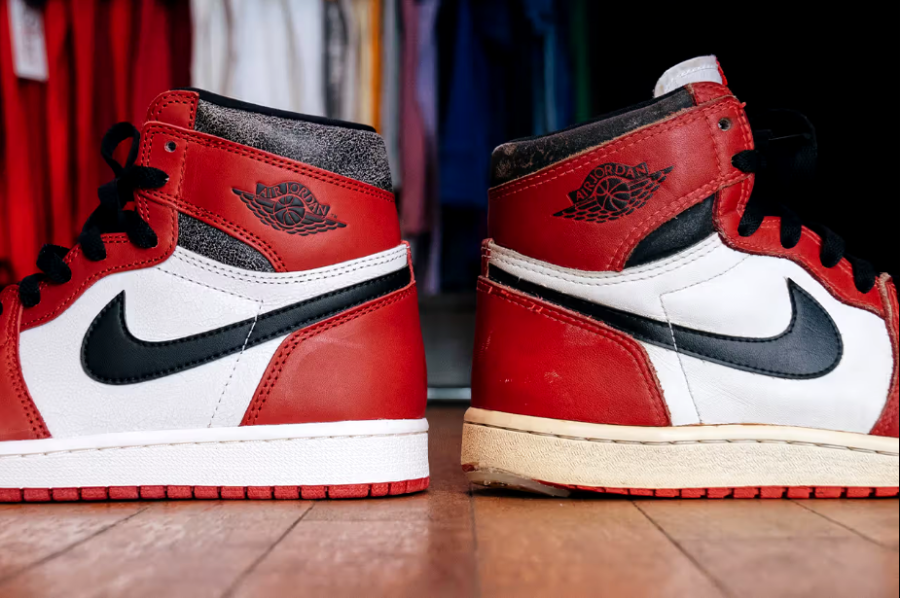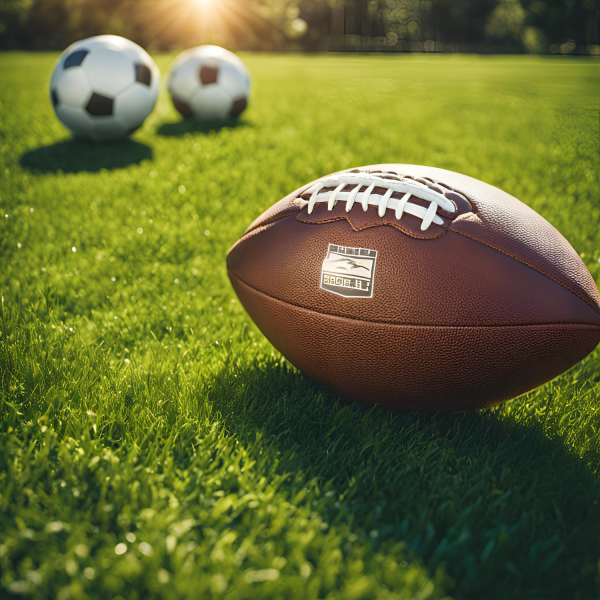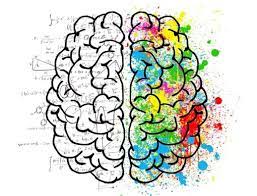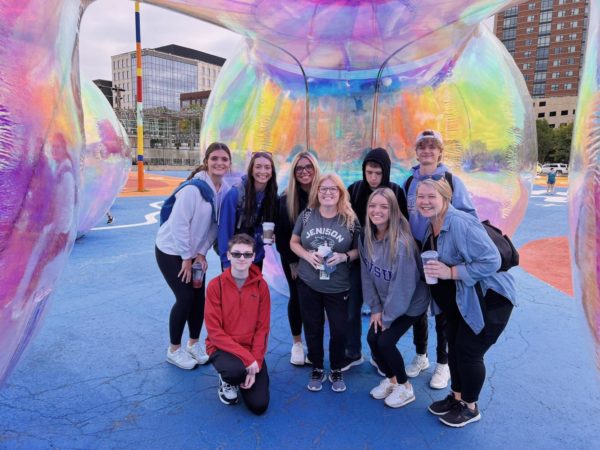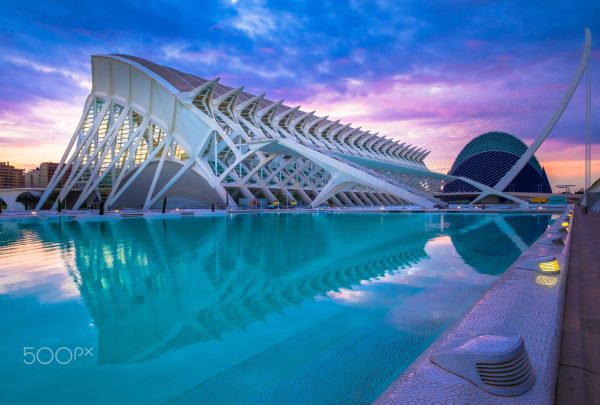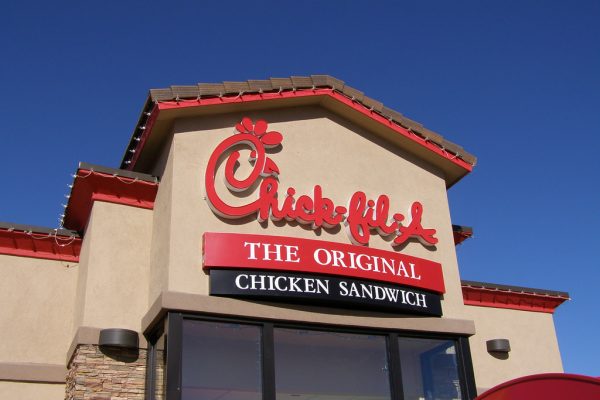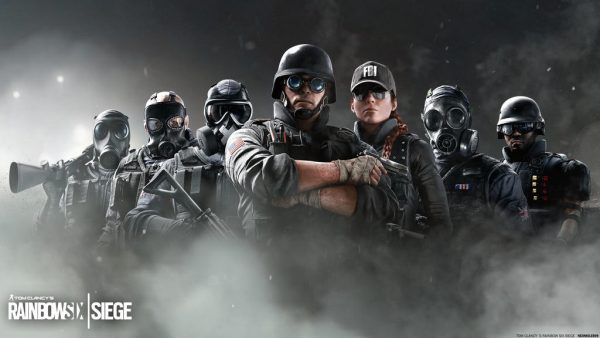Peter Moore and the Air Jordan: ’85 to ’23
Who started the Air Jordan Brand, besides Michael Jordan?
In 1984, Michael Jordan was drafted into the NBA from UNC. People already knew he was going to be great in the national league. So did Nike. In 1977, they hired Peter Moore as an executive and designer. In ‘84 he was put in charge of creating a shoe tailored for Jordan. What Moore came up with was immediately a hit. He wrote in his book : “The idea was to break the color barrier in footwear….prior to that, 99 percent of shoes were white or black. So I decided to design a shoe that would really take color well. And the colors came out as red, black, and white.” The Air Jordan 1 “Chicago” featured the iconic Nike swoosh, along with a logo of a basketball with wings. It sold for $65 in stores and Moore made the shoe to represent the Chicago Bulls. Everyone thought the Jordan 1 was a hit, except for Jordan himself. A quote from Jordan says “I can’t wear that shoe. Those are the devil colors.” Michael ended up signing with Nike anyway for a cool $500,000 yearly.
What made Jordans so popular back in the day?
After the release of the Chicago Jordan 1, Moore and other Nike executives earned praise around the basketball world. But, the NBA held very strict uniform regulations. They ended up banning a specific edition of the Jordan 1, the Jordan 1 “Bred.” This model was black and red, and since it didn’t feature at least 51% white, it got banned for violating uniform rules. In the NBA today, something like that wouldn’t happen, since the rule on the color of sneakers changed in 2018. It’s said that the NBA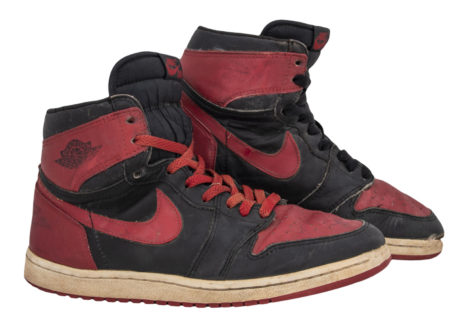 fined Jordan $5,000 every time he wore the Bred colorway during a game, which Nike paid for. So what happened? Well, you would think the demand for Jordans would crash. Instead, the opposite happened. Nike took the chance to advertise the rebellious nature of the shoe, and everyone loved it. Nike projected to sell around 100,000 pairs of Jordans in the first year but ended up selling 3-4 million pairs. Back in those days, brands like Converse and Reebok led the market in basketball sneakers. The release of the Jordan 1 topped sales of both brands in the very first year. It seems obvious, but another thing that made Jordans so popular was Jordan himself. He was coming up as the greatest basketball player of the time, averaging 28.2 points per game. As he gained more fame and recognition, the shoe line did better and better. Everyone wanted to be like Jordan, and that’s how Nike marketed the sneakers.
fined Jordan $5,000 every time he wore the Bred colorway during a game, which Nike paid for. So what happened? Well, you would think the demand for Jordans would crash. Instead, the opposite happened. Nike took the chance to advertise the rebellious nature of the shoe, and everyone loved it. Nike projected to sell around 100,000 pairs of Jordans in the first year but ended up selling 3-4 million pairs. Back in those days, brands like Converse and Reebok led the market in basketball sneakers. The release of the Jordan 1 topped sales of both brands in the very first year. It seems obvious, but another thing that made Jordans so popular was Jordan himself. He was coming up as the greatest basketball player of the time, averaging 28.2 points per game. As he gained more fame and recognition, the shoe line did better and better. Everyone wanted to be like Jordan, and that’s how Nike marketed the sneakers.
 fined Jordan $5,000 every time he wore the Bred colorway during a game, which Nike paid for. So what happened? Well, you would think the demand for Jordans would crash. Instead, the opposite happened. Nike took the chance to advertise the rebellious nature of the shoe, and everyone loved it. Nike projected to sell around 100,000 pairs of Jordans in the first year but ended up selling 3-4 million pairs. Back in those days, brands like Converse and Reebok led the market in basketball sneakers. The release of the Jordan 1 topped sales of both brands in the very first year. It seems obvious, but another thing that made Jordans so popular was Jordan himself. He was coming up as the greatest basketball player of the time, averaging 28.2 points per game. As he gained more fame and recognition, the shoe line did better and better. Everyone wanted to be like Jordan, and that’s how Nike marketed the sneakers.
fined Jordan $5,000 every time he wore the Bred colorway during a game, which Nike paid for. So what happened? Well, you would think the demand for Jordans would crash. Instead, the opposite happened. Nike took the chance to advertise the rebellious nature of the shoe, and everyone loved it. Nike projected to sell around 100,000 pairs of Jordans in the first year but ended up selling 3-4 million pairs. Back in those days, brands like Converse and Reebok led the market in basketball sneakers. The release of the Jordan 1 topped sales of both brands in the very first year. It seems obvious, but another thing that made Jordans so popular was Jordan himself. He was coming up as the greatest basketball player of the time, averaging 28.2 points per game. As he gained more fame and recognition, the shoe line did better and better. Everyone wanted to be like Jordan, and that’s how Nike marketed the sneakers.How have Jordans evolved over the years?
So, the Air Jordan 1 makes history, being one of the greatest sneakers of all time. But few people know more about what happened next. What about the Jordan 2? Or the 3? Or the 18? The evolution of the Jordan brand sometimes goes unnoticed. The continuation of Air Jordan was crucial for the success of the brand. And that meant something fresh. With the Jordan 2 (shown)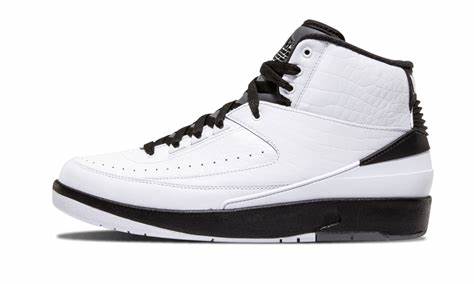 , Peter Moore and his colleague Bruce Kilgore, chose to remove the swoosh logo, giving Jordans more independence. Bruce Kilgore was also a Nike designer and creator of another timeless sneaker, the Air Force 1. Along with the swoosh removal, a full-length air bubble added advanced comfort and evolved technology to the original. The streak of independence continued with the release of new Jordan models. Still veering away from using the Nike branding, and using something new, the Jumpman logo. Yet another timeless and successful work by Peter Moore. A story from the NY Times says “As [Michael] was aiming to leave Nike, the Air Jordan 3 reportedly changed [his] mind. Could this have been the reason the new ‘Jumpman’ logo was added? He was a big star with a big ego to please, after all.” The moment it released with the Jordan 3, people fell in love with the new branding. So much so that it was obvious people couldn’t care less about whether Nike produced the Jordan line or not. In 1997, along with the release of the Jordan 12, the Air Jordan brand separated from Nike altogether. Today, Air Jordan is only a subsidiary of Nike.
, Peter Moore and his colleague Bruce Kilgore, chose to remove the swoosh logo, giving Jordans more independence. Bruce Kilgore was also a Nike designer and creator of another timeless sneaker, the Air Force 1. Along with the swoosh removal, a full-length air bubble added advanced comfort and evolved technology to the original. The streak of independence continued with the release of new Jordan models. Still veering away from using the Nike branding, and using something new, the Jumpman logo. Yet another timeless and successful work by Peter Moore. A story from the NY Times says “As [Michael] was aiming to leave Nike, the Air Jordan 3 reportedly changed [his] mind. Could this have been the reason the new ‘Jumpman’ logo was added? He was a big star with a big ego to please, after all.” The moment it released with the Jordan 3, people fell in love with the new branding. So much so that it was obvious people couldn’t care less about whether Nike produced the Jordan line or not. In 1997, along with the release of the Jordan 12, the Air Jordan brand separated from Nike altogether. Today, Air Jordan is only a subsidiary of Nike.
 , Peter Moore and his colleague Bruce Kilgore, chose to remove the swoosh logo, giving Jordans more independence. Bruce Kilgore was also a Nike designer and creator of another timeless sneaker, the Air Force 1. Along with the swoosh removal, a full-length air bubble added advanced comfort and evolved technology to the original. The streak of independence continued with the release of new Jordan models. Still veering away from using the Nike branding, and using something new, the Jumpman logo. Yet another timeless and successful work by Peter Moore. A story from the NY Times says “As [Michael] was aiming to leave Nike, the Air Jordan 3 reportedly changed [his] mind. Could this have been the reason the new ‘Jumpman’ logo was added? He was a big star with a big ego to please, after all.” The moment it released with the Jordan 3, people fell in love with the new branding. So much so that it was obvious people couldn’t care less about whether Nike produced the Jordan line or not. In 1997, along with the release of the Jordan 12, the Air Jordan brand separated from Nike altogether. Today, Air Jordan is only a subsidiary of Nike.
, Peter Moore and his colleague Bruce Kilgore, chose to remove the swoosh logo, giving Jordans more independence. Bruce Kilgore was also a Nike designer and creator of another timeless sneaker, the Air Force 1. Along with the swoosh removal, a full-length air bubble added advanced comfort and evolved technology to the original. The streak of independence continued with the release of new Jordan models. Still veering away from using the Nike branding, and using something new, the Jumpman logo. Yet another timeless and successful work by Peter Moore. A story from the NY Times says “As [Michael] was aiming to leave Nike, the Air Jordan 3 reportedly changed [his] mind. Could this have been the reason the new ‘Jumpman’ logo was added? He was a big star with a big ego to please, after all.” The moment it released with the Jordan 3, people fell in love with the new branding. So much so that it was obvious people couldn’t care less about whether Nike produced the Jordan line or not. In 1997, along with the release of the Jordan 12, the Air Jordan brand separated from Nike altogether. Today, Air Jordan is only a subsidiary of Nike.Why are Jordans so expensive?
Anyone who has ever gone shopping for a pair of Jordans knows that they’re not cheap. Jordans can range from anywhere between $100 – $20,000. Now, the Air Jordan brand themselves never priced any shoe as high as $20,000. Rather the price comes from the demand for the shoe and how many Nike produce of that shoe. Another thing that drives the price of Jordans is collaborations with other parties. Designer brands like Off-White, Supreme, and Dior have released special versions of certain Jordans. Artists like Eminem, Travis Scott, DJ Khalid, and Billie Eilish have signature models. Big-name companies like Levi’s even dipped into the Air Jordan hype. The biggest thing that makes Jordans such a valuable asset is the fanbase of the brand. In the resale market, you could buy a pair from Nike, then turn around and sell them online for 3 times what you paid. In Feb. 2022, a remarkable pair of the 1985 Chicago Jordan 1 went on auction and sold for $1,012,500. 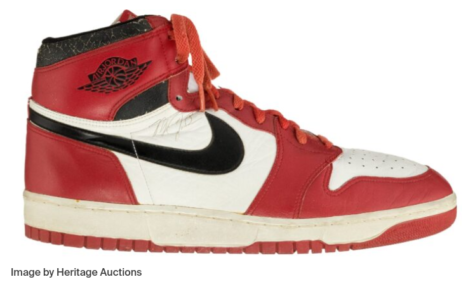 What was so special about this particular pair that made it worth almost 16,000 times more expensive? The sole. Thats it. The sole of this pair wasn’t the usual sole found on Jordan 1’s, but rather the sole found on the Nike Dunk (seen on the right). The Dunk is a basketball shoe released only months after the first Jordan 1 and was also designed by Moore. The edition with the mismatched sole made in 1986 was only a prototype. Morgan Baylis, writer, and Content Coordinator of StockX wrote: “Besides the ankle strap modifications… [Nike] also began experimenting with different soles on the Jordan 1 to see what MJ performed best in.”
What was so special about this particular pair that made it worth almost 16,000 times more expensive? The sole. Thats it. The sole of this pair wasn’t the usual sole found on Jordan 1’s, but rather the sole found on the Nike Dunk (seen on the right). The Dunk is a basketball shoe released only months after the first Jordan 1 and was also designed by Moore. The edition with the mismatched sole made in 1986 was only a prototype. Morgan Baylis, writer, and Content Coordinator of StockX wrote: “Besides the ankle strap modifications… [Nike] also began experimenting with different soles on the Jordan 1 to see what MJ performed best in.”
 What was so special about this particular pair that made it worth almost 16,000 times more expensive? The sole. Thats it. The sole of this pair wasn’t the usual sole found on Jordan 1’s, but rather the sole found on the Nike Dunk (seen on the right). The Dunk is a basketball shoe released only months after the first Jordan 1 and was also designed by Moore. The edition with the mismatched sole made in 1986 was only a prototype. Morgan Baylis, writer, and Content Coordinator of StockX wrote: “Besides the ankle strap modifications… [Nike] also began experimenting with different soles on the Jordan 1 to see what MJ performed best in.”
What was so special about this particular pair that made it worth almost 16,000 times more expensive? The sole. Thats it. The sole of this pair wasn’t the usual sole found on Jordan 1’s, but rather the sole found on the Nike Dunk (seen on the right). The Dunk is a basketball shoe released only months after the first Jordan 1 and was also designed by Moore. The edition with the mismatched sole made in 1986 was only a prototype. Morgan Baylis, writer, and Content Coordinator of StockX wrote: “Besides the ankle strap modifications… [Nike] also began experimenting with different soles on the Jordan 1 to see what MJ performed best in.”Where can you find Jordans today?
Nowadays, the power of the internet and online market is what drives the demand for Jordans. Apps like SNKRS, StockX, GOAT, Ebay, and others have made it easy. On these sites, you can look at and buy the latest Jordans at any time and anywhere. People can go online and see their favorite influencers, rappers, and actors with the newest pair of J’s. Compare that to the 80s and 90s when you only saw Jordans in basketball. You can pretty much find someone wearing a pair anywhere you go now. Along with online markets, high-end sneaker stores like Cook Kicks, Foot Locker, and Stadium Goods have thrived on the success of the Air Jordan lineup.
